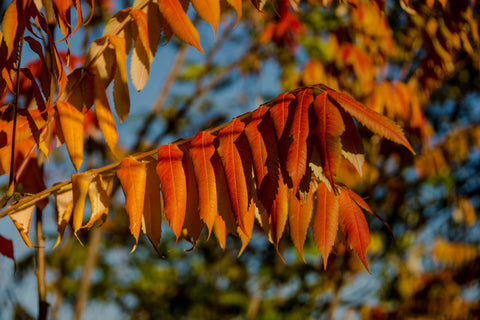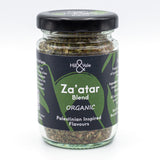Sumac
What is Sumac?
This crimson powder has been a staple in Middle Eastern cooking for centuries. This tart, tangy spice is made from the ground fruits of the Sumac plant, Rhus coriara. It really is a hidden gem of the spice cabinet and should be used much more.

What does Sumac taste like?
The strongest flavour notes in sumac are tart, tanginess. There are underlying citrus notes much like fresh lemon rind but the overwhelming sensation is a moreish astringency.
What is Sumac used for?
Sumac has been used in the Maghrebi cuisines of North Africa and the cuisines of the Middle East since antiquity. It’s typically used as a souring agent which helps to elevate the typically earthy and full flavours found in the regional stews and marinades. The sharp tartness is particularly helpful to cut through fatty flavours like duck or lamb. Sumac pairs well with vegetables which absorb flavour like potatoes and aubergine.
Sumac is a common condiment added to falafel and hummus in Arabic cooking. Kebabs, koftas and rice are all commonly seasoned with sumac to help bring some sourness to the dish. It also often appears in spice blends from the region such as Za’atar.
Sumac has been used in the US to make “sumacade”, a tangy lemonade like drink with a delightful red hue. This spice has serious potential so let your creativity run wild.
Sumac Recipes
We've gathered a few of our favourite recipes to cook with Sumac, why not take the step and try them out?
Sumac Roasted Eggplant and Tomatoes with Quinoa
Sumac-Scented Eggplant and Chickpeas
Baked feta with sumac & grapes recipe
Names and Origins
The name Sumac has been used in English since at least the 15th century; it originated from the classical Syrian word meaning “reddening”. This may be related to its historic use as a deep red dye.
The Sumac family is closely related to the Cashew tree, from which we get cashew nuts. Most sumac used for spices is of the species Rhus coriaria, a small tree which is native to the Mediterranean. The fruit of the plant comes in the form of bright red, hairy drupes growing in large bunches. These fruits are dried and ground to produce the rich red powder you’re more likely to see in your cupboard.

Sumac is often kept as an ornamental plant due to the delightful colours in turns during the Autumn.
Our products


